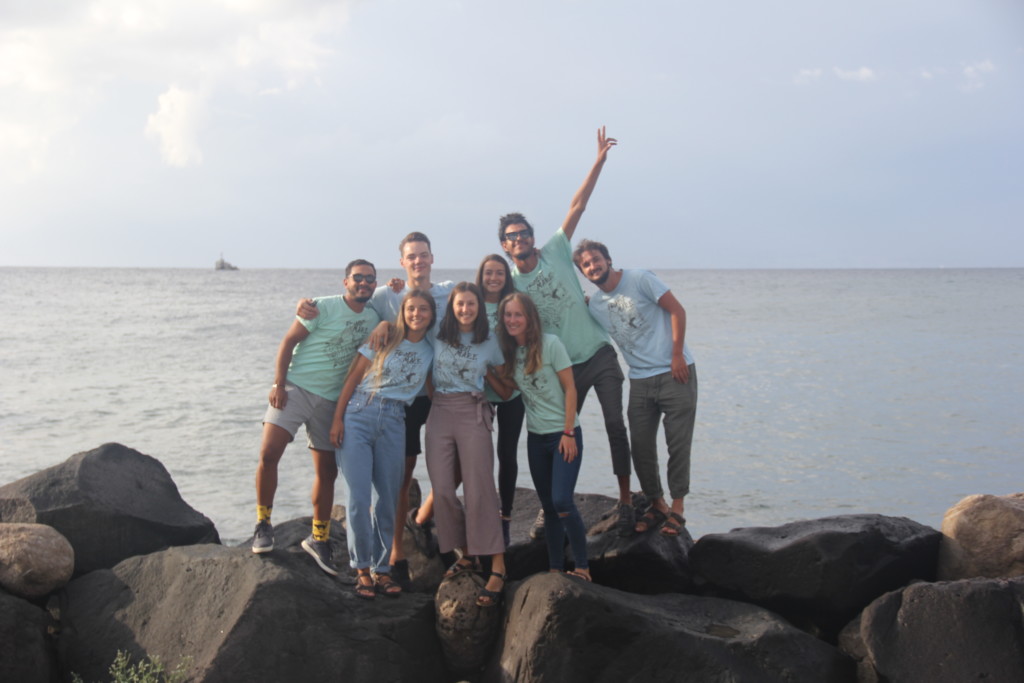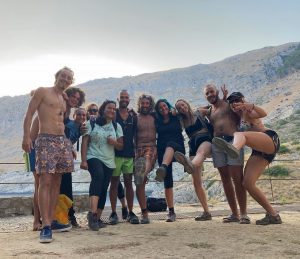Updated on January 18, 2023
Sea turtle monitoring in Cilento told by one of us
One of the most important topics, among a billion things we do, is perhaps the work in Cilento with turtles. This work gives us a lot of tools to bring to whatever activities we engage in during the summer and onward.
Cilento is located in the south of Naples, however always in the region of Campania. This involvement with nature comes from 2016 with the creation of the Center for Recovery of Marine Turtles in Massa Lubrense, or if we do not want to consider the center we can say that in previous years because there were work was being done. Before this, the biologists found the first sea turtle nest in Campania in 2002. So the need to work on this urgent issue.
M.A.R.E. project volunteers go to this region at least twice to:
First: find the tracks left by the turtles.
Second: monitor the nests we had found.
On our first trip to Cilento we were at the Campeggio Le Saline a few meters from the beach of Palinuro. Every morning we woke up more or less at 4:30 to start at 5:00. The Zoological Station of Naples (SZN) chose Palinuro, Porto Palinuro, Calanca, Capo Grosso, Mingardo, Ficocella, Bau Bau, Camerota and Lentiscelle to look for tracks. Materials such as cap, comfortable clothes, comfortable shoes, sunscreen and especially water were things we could not forget. The walk was, as it was done, until 8:00 maximum. We did it in pairs and did not stray too far, because the best form of finding the trail is between the water line and 5 meters ahead. The goal was to walk close to each other and be as careful as possible. We had a protocol from Caretta in Vista with the important information to follow (rules, photos with track resubmissions, sign-posting and other things). For those unfamiliar with this topic it could be a form of help before coming as a proper volunteer who belongs to another association.
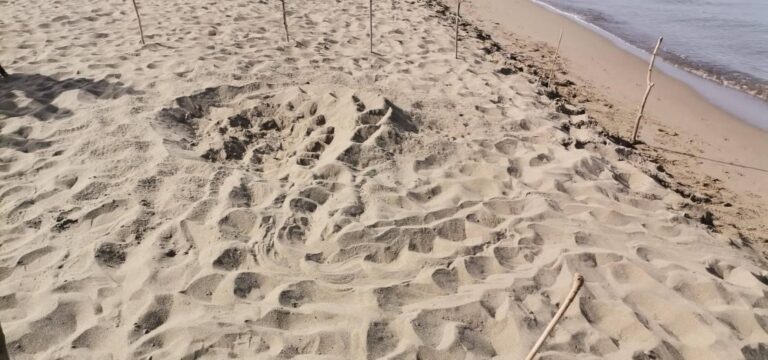
As Project M.A.R.E. we go two people at a time (at least this year) and then we find people who come from other parts of Italy. It is a very good process and I recommend you to join us whenever you want. We can explain things we do and mainly talk about turtles because there is so much to know and learn. After the work day we sleep so we don’t become zombies in a couple of days. For those who like to camp near the beach it is a great opportunity to take advantage of this kind of mix of nature and cultural exchange.
After work it was normal to go back to the tent to get some sleep and only after that to think in having lunch. Then in the afternoon, we didn’t have some kind of commitment, so we often went for a swim or a walk around town. The aperitivo in Cilento has a different flavor and I didn’t know this tradition – I think I can call it that – so it left me surprised.
This is pretty much how a day works in the first phase of work. We went another time a few weeks later and during that time the work, for me, was the same for a few days and I added an assignment that I will tell about right away.
It has, in fact, become the most rewarding part and where I have made the most progress at the personal level and also at the scientific level. Creating a control around the nests is the form how we work there. As we found them before is easy to recognize afterwards. In small groups, we put ourselves in working time schedule and there is always at least one person who is close to the nest and give the information the people need to understand the reproductive cycle of a turtle. Many times a relationship is formed, even if it is for a short time, with people who come to visit. I have met some families as well as young kids and people with the same age I have. They brought us food, coffee, things to eat for breakfast and beers. So far, I maintain a friendship relationship between us from a distance. The people I worked with every day in Camerota left a mark on my heart that I will carry for the rest of my life. Great moments. The days of smiling, jumping into the water, eating, drinking, walking, teaching and little sleeping time were things that brought us together as a group.
Small turtles are found under sand, roughly between 30 and 50 cm, and it is not known how many there are. It is thought and known that there are about a hundred of them. Seeing them moving up and out of the sand left me speechless and wide-eyed.
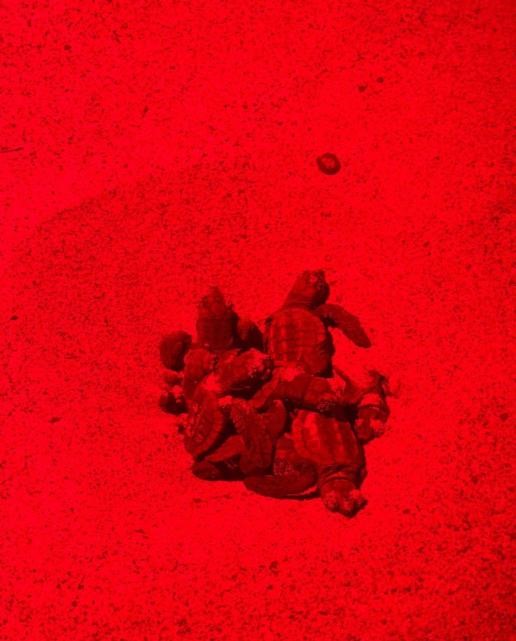
This is a short summary of the days and activities that happen, it is however possible to find more information on Instagram and Facebook. Talking and writing about turtles would make a very long and beautiful thesis. Lucky is the person who will do it.
- Some interesting facts about turtles
In the world, we have 7 sea turtles species in which 3 are found in the Mediterranean Sea. The Chelonia mydas (green turtle) the Dermochelys coriacea (leatherback turtle) and the Caretta caretta we already know.
They are considered poikilothermic, that is, their lives depend on the temperature of the surrounding environment, as well as their sex. In a simple form, it is known that, in the eggs, with heat, they become female and with cold, they become male. Maturity comes more or less at 20 years of age and the incubation time lasts about 2 months.
In the western part of the Mediterranean, there are marine protected areas with dedicated turtle protection. As if you can see in the picture down there are more turtles in the Eastern basin.
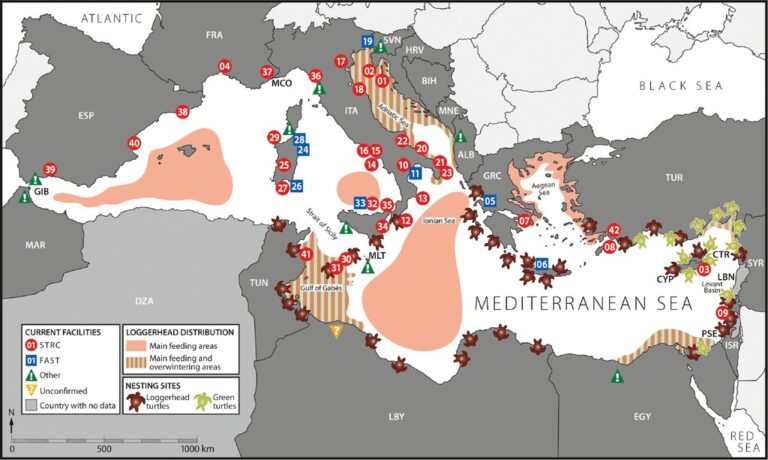
With climate warming, the research that is being done and continues to be done shows us a change in behavior and particularly in nesting. The turtles are starting to nest west of the Mediterranean more and more.
The image down shows the number of nests per 15 km, the size of the symbol increases in proportion to the number, the green dots indicate nests before 2020.
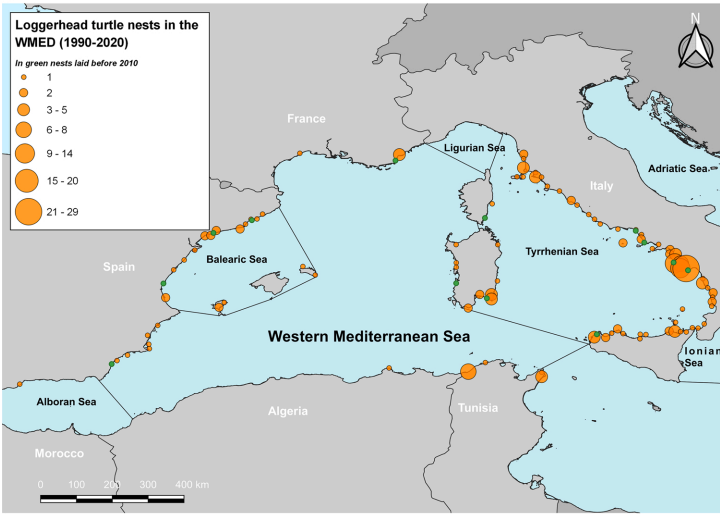
— Pedro Ribeiro


